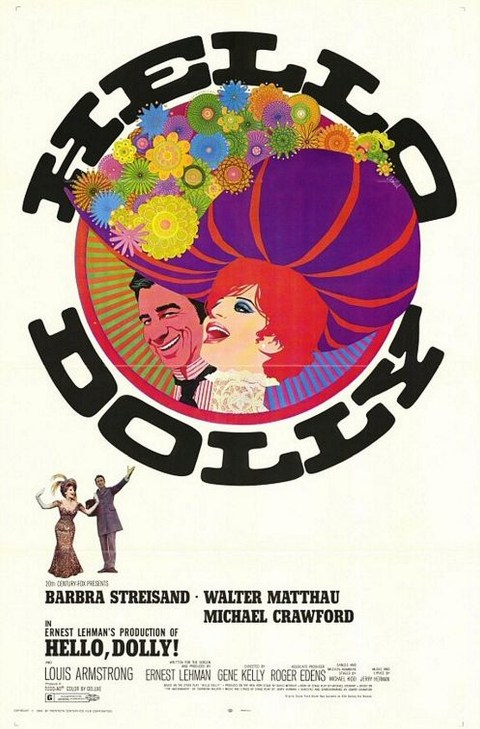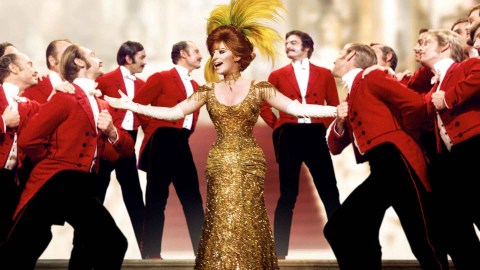17. 4. – 19. 4. 2026
Hello, Dolly!

 Original title: Hello, Dolly!
Original title: Hello, Dolly!Director: Gene Kelly
Production: 1969, USA
Length: 146 min. + intermission
Annotation for KRRR! 2013
The young widow Dolly Levi (Barbra Streisand) is a New York socialite, a talkative, enterprising schemer who makes a living as a matchmaker. This time, she herself seeks a union with a wealthy businessman, and to achieve her goal, she manipulates everyone around her, and the by-product of her efforts (unlike another famous literary and film matchmaker, Jane Austen's Emma) are happily concluded partnerships. Her territory is New York (and the nearby town of Yonkers) at the end of the 19th century, which is currently living a grand parade that will present suffragettes, war veterans, unions and magnificent triumphal carriages, and is a nationalist celebration presenting a proud city.
Before it was brought to the screen in 1969 in musical form, the story of Dolly Levi went through a complex adaptation process. The original 19th-century play was adapted by Thornton Wilder, who only achieved success with its second revised version, renamed The Matchmaker (1955). It was then based on a (non-musical) film of the same name in 1958. Michael Stewart rewrote the play into a musical, the title of which, Dolly, was first performed in 1964 at the St. James Theatre in New York and became a long-standing hit.
Although the film musical, which had been experiencing its golden era since the 1930s, was already on the decline in the 1960s, this decade also brought several big hits based on Broadway models: West Side Story (1961), My Fair Lady (1964) and The Sound of Music (1965). The film Hello, Dolly was not made until the end of the decade, when the abolition of the censorship requirements of the Production Code and the change in the composition of cinemagoers transformed audience demands and musicals fell into the margins of interest. Although Hello, Dolly! was the fourth highest-grossing film in the United States in 1969, its box office was disappointing given its budget. Critical reception was mixed. The film achieved at least a decent success with the Academy, winning four of its seven Oscar nominations. The film was released in Czechoslovakia in the spring of 1970. Hello, Dolly! is one of the last of the twenty films shot between 1955 and 1971 on the Todd-AO film format, which used 65mm negative. This musical used the 70mm film format for spectacular group dances that transformed various locations (open spaces such as streets, train stations and parks, but also the interior of a store or a luxury restaurant) into a dance floor, where the singing performances and the perfect choreography of Gene Kelly, who also directed the entire film, are perfectly complemented. Dolly, as their main star, enchants with her confident performance and beautiful dresses. The music and lyrics, written by Jerry Herman, were mostly taken from the original Broadway production, but "Just Leave Everything to Me" and "Love Is Only Love" were written specifically for the film. The famous song Hello, Dolly! was first sung by Carol Channing, who played the lead role in the original Broadway musical. Louis Armstrong recorded the song in 1964 as a promotional recording, which eventually became the most successful recording of his career. The song is varied several times in the film, and Satchmo himself joins the duet with Barbra Streisand for a few minutes, playing the small but famous role of an orchestra conductor in a luxury restaurant. The film culminates in a scene lasting more than thirty minutes, in which all the main characters meet and where, in addition to dancing and singing, the waiters also excel in the frantic rhythm of acrobatic performances.